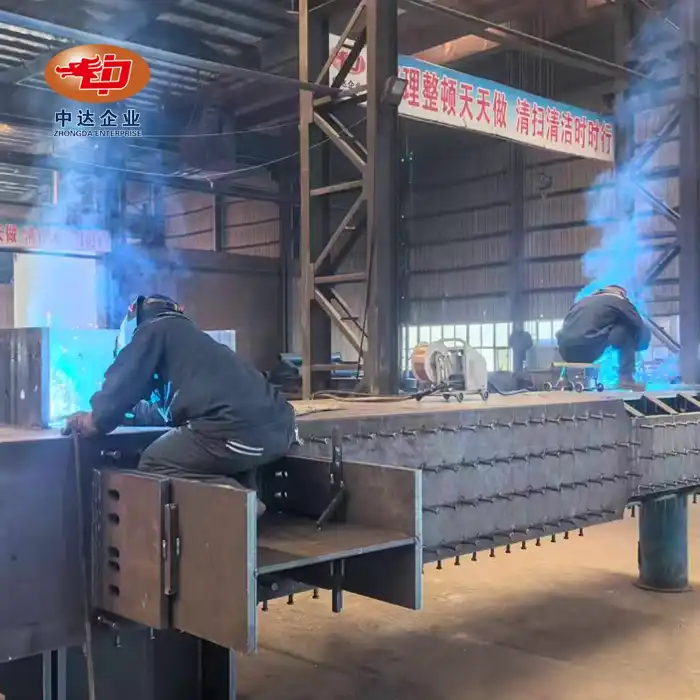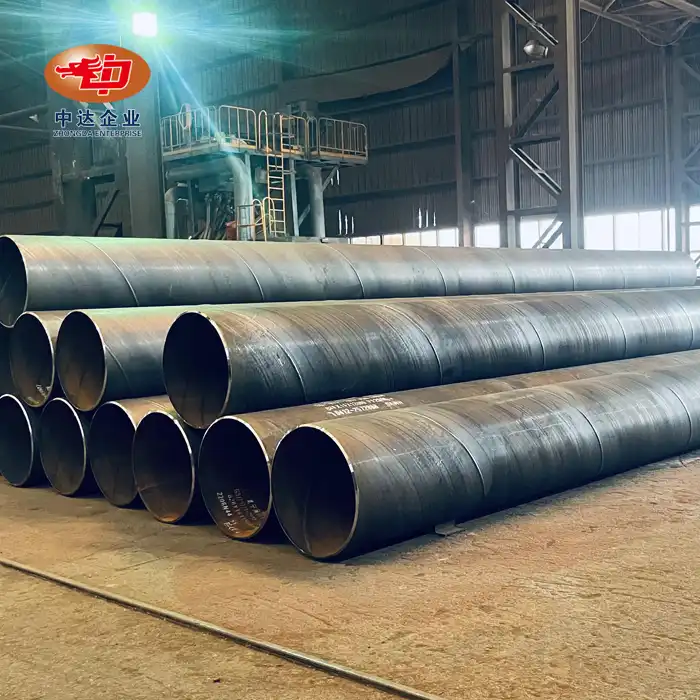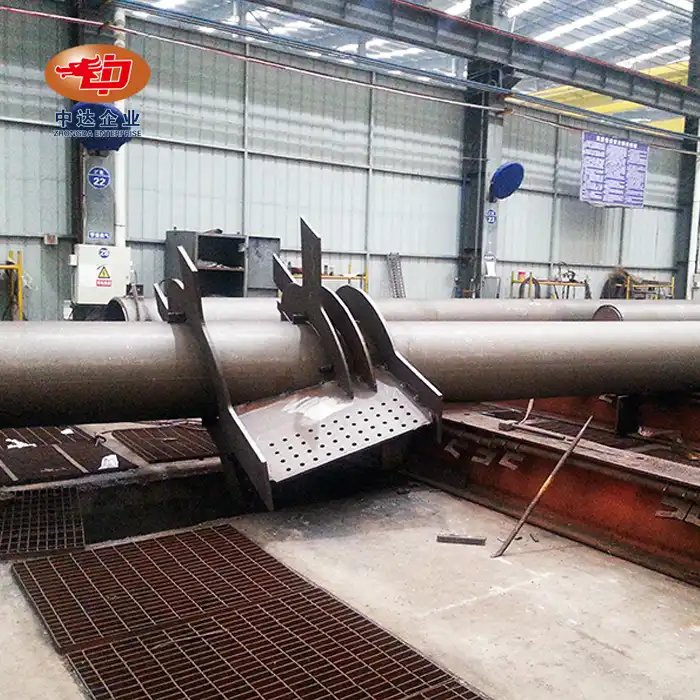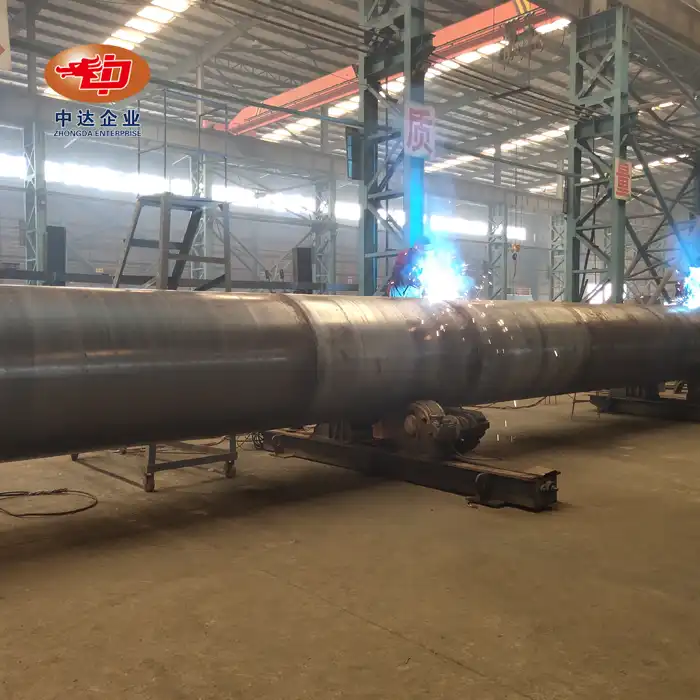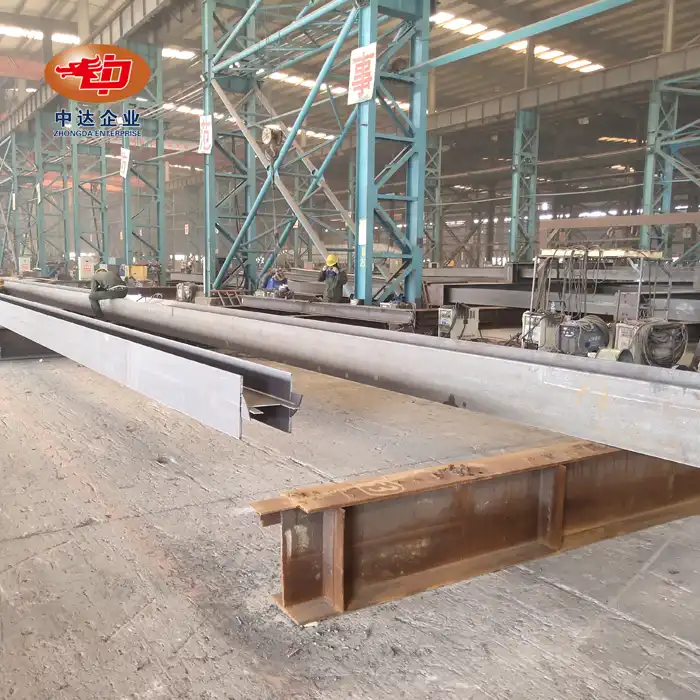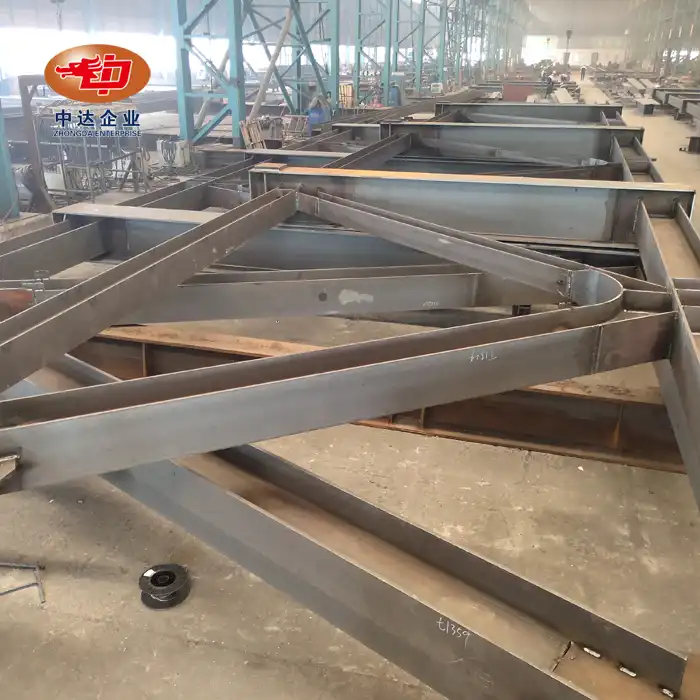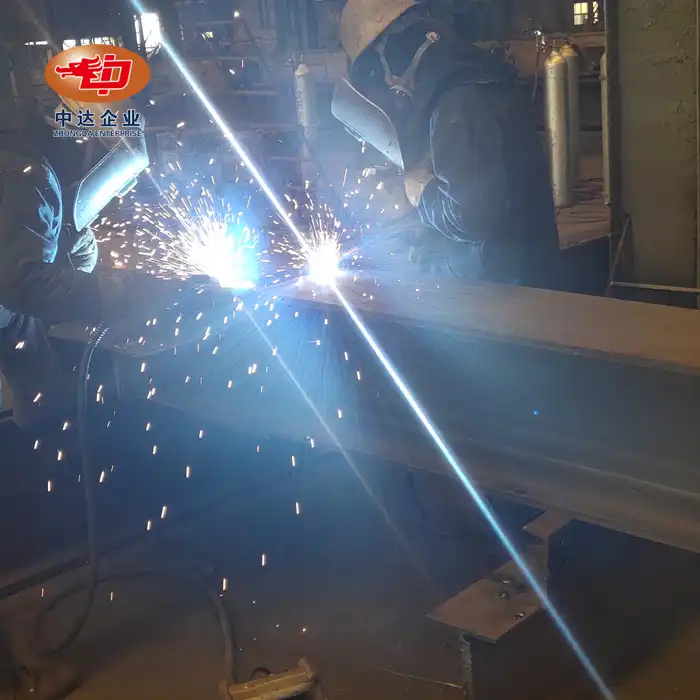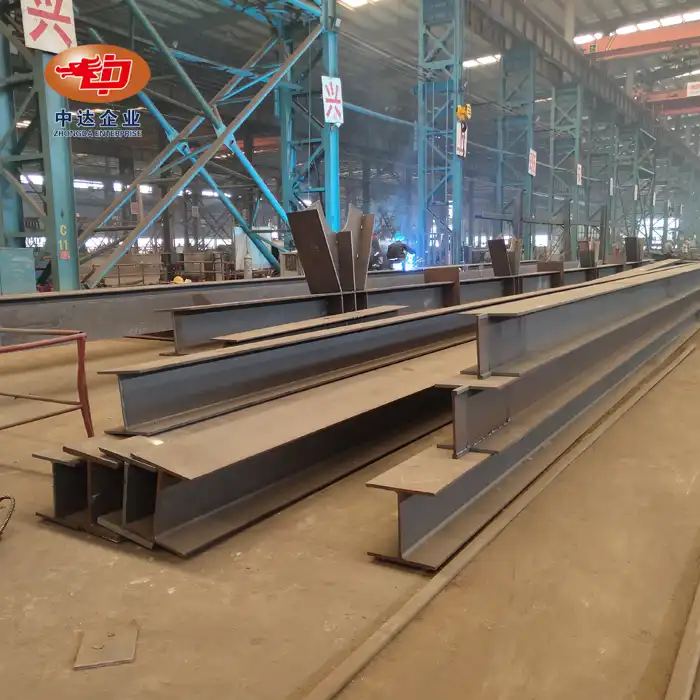
How to Make Steel-Concrete Composite Beams Corrosion- and Fire-Resistant in Coastal or Mining Environments?
Steel-concrete composite beams offer exceptional strength and durability, but they face unique challenges in harsh coastal and mining environments. To ensure long-lasting performance, it's crucial to implement effective corrosion and fire resistance strategies. This can be achieved by using stainless steel studs or GFRP connectors instead of traditional steel components, reducing the risk of salt spray corrosion. Additionally, utilizing marine cement in concrete and increasing the protective layer thickness enhances durability. For fire resistance, covering steel beams with concrete slabs can provide over 2 hours of fire endurance, meeting AS 4100 standards. These methods, combined with Zhongda Steel's expertise in precision steel solutions and -60°C Weathering Steel Anti-corrosion Technology, create robust structures that withstand extreme conditions.
Enhancing Corrosion Resistance in Coastal and Mining Environments
Selection of Corrosion-Resistant Materials
In coastal and mining environments, the selection of appropriate materials is paramount to ensuring the longevity of steel-concrete composite beams. These environments are notorious for their corrosive nature, with salt spray and aggressive chemicals posing significant threats to structural integrity. To combat these challenges, engineers and designers must carefully choose materials that can withstand these harsh conditions.
Stainless steel studs have emerged as a superior alternative to traditional carbon steel components. Their inherent resistance to corrosion makes them ideal for use in marine and mining applications. The chromium content in stainless steel forms a protective oxide layer, effectively shielding the underlying metal from corrosive elements. This passive film continuously regenerates when damaged, providing long-term protection against rust and deterioration.
Another innovative solution gaining traction is the use of Glass Fiber Reinforced Polymer (GFRP) connectors. These composite materials offer excellent corrosion resistance and high strength-to-weight ratios. GFRP connectors are impervious to chloride ion penetration, making them particularly suitable for coastal environments where salt-induced corrosion is a primary concern. Their non-conductive nature also eliminates the risk of galvanic corrosion, which can occur when dissimilar metals are in contact in the presence of an electrolyte.
Specialized Concrete Mixtures for Harsh Environments
The concrete component of composite beams plays a crucial role in protecting the steel elements from corrosive agents. In coastal and mining settings, standard concrete mixtures may not provide adequate protection. Therefore, specialized concrete formulations are essential to enhance the overall corrosion resistance of the structure.
Marine cement, a type of hydraulic binder specifically designed for use in aggressive marine environments, offers superior resistance to chloride and sulfate attacks. This cement typically contains additives that reduce permeability and increase the concrete's ability to withstand chemical aggression. When used in steel-concrete composite beams, marine cement creates a more impermeable barrier, significantly reducing the ingress of corrosive agents.
Increasing the thickness of the concrete protective layer is another effective strategy to enhance corrosion resistance. A thicker cover provides a greater physical barrier between the steel components and the corrosive environment. This increased thickness slows down the rate of chloride ion penetration, effectively extending the time it takes for corrosive agents to reach the steel reinforcement or connectors.

Surface Treatments and Coatings
Surface treatments and protective coatings can provide an additional layer of defense against corrosion in steel-concrete composite beams. These treatments are particularly beneficial for exposed steel surfaces that are not encased in concrete.
Epoxy coatings are widely used in marine and mining environments due to their excellent adhesion properties and resistance to chemical attack. These coatings form a barrier that prevents moisture and corrosive agents from coming into contact with the steel surface. For even greater protection, multi-layer coating systems can be applied, combining primers, intermediate coats, and topcoats to create a robust barrier against corrosion.
Galvanization is another effective surface treatment that can significantly enhance corrosion resistance. The process involves coating steel components with a layer of zinc, which acts as a sacrificial anode. In the event of surface damage, the zinc corrodes preferentially, protecting the underlying steel. This sacrificial protection mechanism makes galvanization particularly effective in coastal environments where constant exposure to salt spray is a concern.
Fire Resistance Strategies for Steel-Concrete Composite Beams
Concrete Encasement for Fire Protection
One of the most effective strategies for enhancing the fire resistance of steel-concrete composite beams is the use of concrete encasement. This method involves encasing the steel beam, either partially or fully, within a layer of concrete. The concrete acts as a thermal barrier, protecting the steel from direct exposure to high temperatures during a fire event.
The effectiveness of concrete encasement lies in its low thermal conductivity and high specific heat capacity. As temperatures rise during a fire, the concrete absorbs and dissipates heat, slowing the rate at which the steel beam heats up. This delay in temperature increase is crucial, as it allows the steel to maintain its structural integrity for a longer period, potentially providing the necessary time for evacuation and firefighting efforts.
Research has shown that concrete-encased steel beams can achieve fire resistance ratings of up to 4 hours, depending on the thickness of the concrete cover and the specific design of the composite beam. This level of fire resistance is particularly important in mining environments, where the risk of fire can be elevated due to the presence of flammable materials and potential for equipment-related fires.
Intumescent Coatings for Exposed Steel
In situations where full concrete encasement is not feasible or desirable, intumescent coatings offer an alternative method for providing fire protection to steel-concrete composite beams. These specialized coatings are designed to expand and char when exposed to high temperatures, forming an insulating layer that protects the steel underneath.
Intumescent coatings are particularly useful for protecting exposed steel sections of composite beams. When subjected to fire, these coatings can expand up to 50 times their original thickness, creating a protective char layer that insulates the steel and slows heat transfer. This expansion process is triggered at temperatures around 200-300°C, well below the point at which steel begins to lose its structural properties.
The application of intumescent coatings requires careful consideration of factors such as the required fire resistance rating, the section factor of the steel member, and the critical temperature of the steel. In coastal environments, it's essential to select intumescent coatings that are also resistant to moisture and salt spray to ensure long-term effectiveness and durability.
Composite Action for Enhanced Fire Performance
The inherent design of steel-concrete composite beams contributes significantly to their fire resistance capabilities. The composite action between the steel beam and concrete slab creates a synergistic effect that enhances the overall fire performance of the structure.
During a fire event, the concrete slab acts as a heat sink, absorbing and distributing heat away from the steel beam. This heat absorption capacity of the concrete helps to maintain lower temperatures in the steel for a longer period. Additionally, the concrete slab provides a degree of protection to the top flange of the steel beam, which is typically the most critical area in terms of fire resistance.
The shear connectors that join the steel beam to the concrete slab play a crucial role in maintaining composite action during fire exposure. Proper design and spacing of these connectors ensure that the composite behavior is maintained even at elevated temperatures, allowing for effective load transfer and structural integrity. In coastal and mining environments, where corrosion resistance is also a concern, the use of stainless steel or GFRP shear connectors can provide both fire and corrosion resistance benefits.
Maintenance and Inspection Protocols for Long-Term Performance
Regular Inspection Schedules
Implementing a robust inspection schedule is crucial for maintaining the corrosion and fire resistance of steel-concrete composite beams in coastal and mining environments. Regular inspections allow for early detection of potential issues, enabling timely interventions that can prevent more serious problems from developing.
Visual inspections should be conducted at frequent intervals, with particular attention paid to areas prone to corrosion or damage. These include connection points, exposed steel surfaces, and areas where water or chemicals may accumulate. In coastal environments, inspections should focus on signs of salt-induced corrosion, such as rust staining or spalling of concrete cover.
Non-destructive testing (NDT) techniques can complement visual inspections by providing deeper insights into the condition of the composite beams. Ultrasonic testing can be used to detect internal flaws or delaminations in the concrete, while magnetic particle testing can reveal surface and near-surface defects in the steel components. For fire-resistant coatings, thickness measurements should be regularly performed to ensure that the protective layer remains adequate.
Preventative Maintenance Strategies
Proactive maintenance is essential for preserving the corrosion and fire resistance of steel-concrete composite beams over their lifecycle. This includes regular cleaning to remove salt deposits, dust, and other contaminants that can accelerate corrosion or compromise fire-resistant coatings.
In coastal environments, freshwater washing can help remove salt accumulation on exposed surfaces. For mining applications, where exposure to aggressive chemicals is common, neutralization treatments may be necessary to mitigate the effects of acid or alkaline substances on the composite structure.
Reapplication or touch-up of protective coatings should be performed as needed, based on the results of regular inspections. This is particularly important for intumescent coatings, which may require periodic renewal to maintain their fire-resistant properties. Similarly, any damage to concrete encasement should be promptly repaired to ensure continued fire protection and corrosion resistance.
Documentation and Performance Monitoring
Maintaining comprehensive documentation of inspection results, maintenance activities, and any repairs or modifications is crucial for effective long-term management of steel-concrete composite beams. This documentation serves as a valuable resource for tracking the performance of the structure over time and informing future maintenance decisions.
Implementing a digital asset management system can greatly enhance the efficiency of documentation and performance monitoring. Such systems allow for real-time tracking of inspection schedules, maintenance activities, and performance metrics. They can also facilitate the analysis of long-term trends, helping to identify potential issues before they become critical.
In addition to traditional documentation, emerging technologies such as structural health monitoring systems can provide continuous, real-time data on the condition of composite beams. These systems use sensors to monitor parameters such as strain, vibration, and temperature, offering insights into the structure's performance under various environmental conditions and loading scenarios.
Conclusion
Ensuring the corrosion and fire resistance of steel-concrete composite beams in coastal and mining environments requires a multifaceted approach. By carefully selecting materials, implementing specialized concrete mixtures, and utilizing advanced protective measures, these structures can withstand harsh conditions while maintaining their structural integrity. Regular inspections, proactive maintenance, and comprehensive documentation are essential for long-term performance. With these strategies in place, steel-concrete composite beams can provide reliable and durable solutions for challenging environmental conditions.
Contact Us
For expert guidance on implementing these strategies and accessing cutting-edge seismic-resistant steel-concrete composite beam solutions, turn to Zhongda Steel. Our precision engineering, BIM-driven prefabrication, and advanced anti-corrosion technologies make us the ideal partner for your coastal and mining projects. Contact us at Ava@zd-steels.com to discover how we can enhance the durability and safety of your steel-concrete composite structures.
References
Johnson, R.P. (2018). Composite Structures of Steel and Concrete: Beams, Slabs, Columns and Frames for Buildings. Wiley-Blackwell.
Correia, J.R., Bai, Y., & Keller, T. (2015). A review of the fire behaviour of pultruded GFRP structural profiles for civil engineering applications. Composite Structures, 127, 267-287.
Shi, X., Xie, N., Fortune, K., & Gong, J. (2012). Durability of steel reinforced concrete in chloride environments: An overview. Construction and Building Materials, 30, 125-138.
Kodur, V.K.R., & Shakya, A.M. (2017). Effect of temperature on thermal properties of spray applied fire resistive materials. Fire Safety Journal, 91, 864-875.
Liang, Q.Q. (2014). Analysis and Design of Steel and Composite Structures. CRC Press.
Peek, R.L., & Eagar, T.W. (2014). Corrosion Resistance of Stainless Steel Fasteners in Marine Environments. Journal of Materials Engineering and Performance, 23(4), 1377-1385.
YOU MAY LIKE










